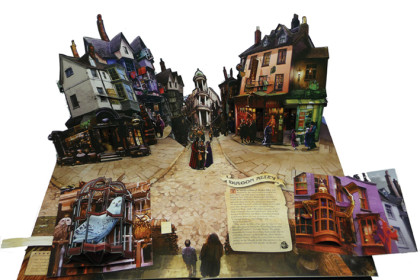
How many book lovers could tell they really know everything about their objects of desire? Are you sure you are not missing out anything, unless you are a printer or an antique expert? In this section you will find a selection of definitions – more or less known – to test your knowledge and discover curious tips.
ABC or spelling book – So named by the first three letters of the alphabet. Before syllabic method affirmed, it was the book on which we learnt to read. As a teaching tool it established itself in the course of the fifteenth century, with the rise of the educational institution in the cities. Woodcut ABCs (printed with engraved plates on wood) were produced throughout the eighteenth century. Since the mid-nineteenth century they were replaced by textbook, printed with the most modern printing methods but generally lacking of illustrations that accompanied more refined texts of ABCs.
Abominario – book in which were written “abominationes”, i.e. formulas of anathemas and curses of the popes against invaders and predators of church property, and various types of excommunication.
Acarnario – Pulpy side, the smoother one, of parchment.
Acephalous – Paper or manuscript missing of the first pages, more specifically of title page, if the missing pages are inside we could speaks of gap, if it lacks of the final part of the book it is told mutilated.
Allonyme – From the greek “allos”, another, and “onoma” name: book published under different name than the author.
Anastatic – Reprinting in one color, obtained by any process of forming and printing, which faithfully reproduces the shape, size, order of characters making up the pages of old or even recent but no longer available editions.
Animated book – So are defined the books whose pages have three dimensions, an effect achieved by mechanical devices and paper industry that make them theater-shaped. The origin of the animated books dating back to sixteenth century: the Astronomicum Caesareum of 1540 assembled moving parts of different colors with which it was possible to determine the position of Mars at any time. The use of devices that allow the animation to parts of the text was long an exclusive feature of scientific books, and only in the nineteenth century, with the progress of press and the appearance of chromolithograph, that the first animated books (now called “pop up”) dedicated to childhood was born. They soon became very popular and met between 1860 and the first decade of the twentieth century a veritable “golden age”.
Approbatio – Title of approval that once had to be granted by ecclesiastical authorities to publish a particular work. It was placed in the first or last pages of the book.
 English
English  Italiano
Italiano 



